Republic of Lithuania
| |
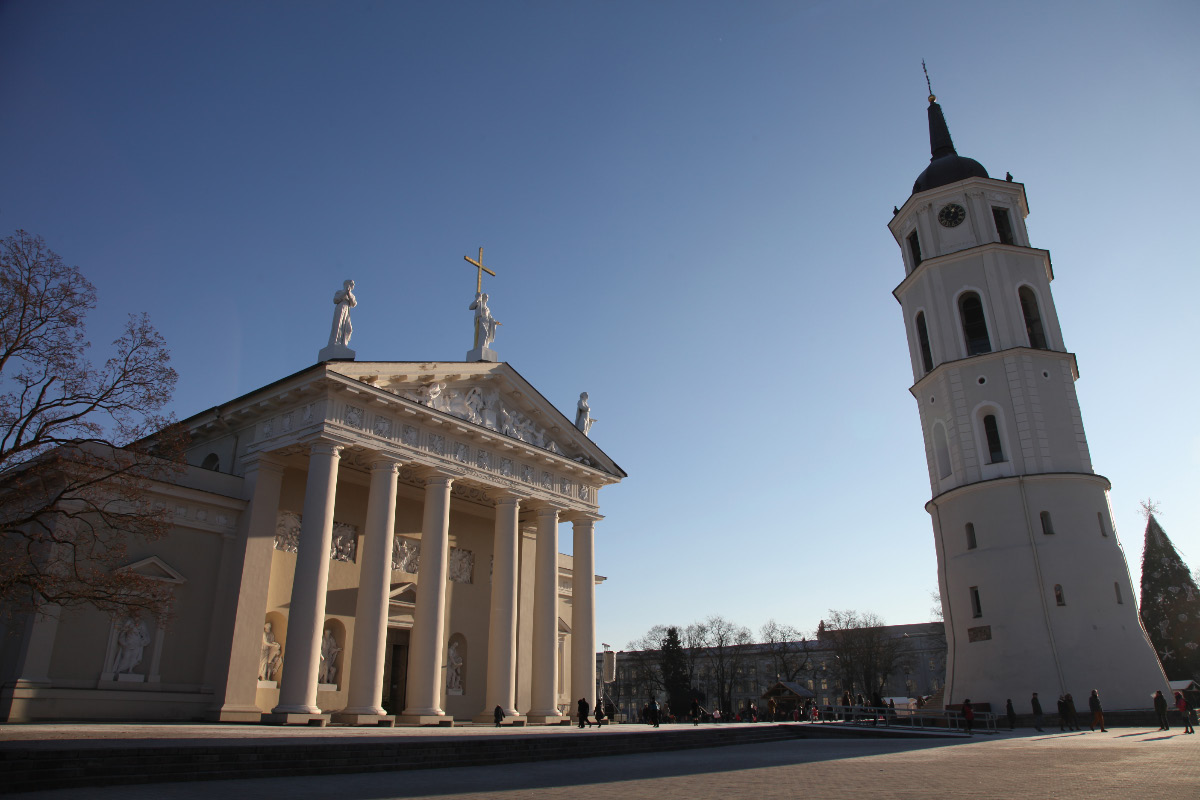 |
|
| |
Vilniaus Šv. Stanislovo ir Šv. Vladislovo Arkikatedra Bazilika – Cathedral Basilica of Saints Stanislaus and Vladislav – Bazylika archikatedralna św. Stanisława Biskupa i św. Władysława |
|
| |
Though possessing roots centuries deeper still, the Polish-Lithuanian Commonwealth created by the Union of Lublin in 1569, was officially named:
- in Polish: Królestwo Polskie i Wielkie Księstwo Litewskie;
- in Lithuanian: Lenkijos Karalystė ir Lietuvos Didžioji Kunigaikštystė;
- in Ukrainian: Королівство Польське та Вели́ке князі́вство Лито́вське;
- in Belarusian: Каралеўства Польскае і Вялікае Княства Літоўскае.
It was one of the largest and most populous countries of 16th- and 17th-Century Europe. Though no modern democracy in the sense that all adult inhabitants participated, still in percentage terms the franchise, the right to participant in the democratic process, extended in Poland-Lithuania to two percent of the population. This contrasted with the situtation in the Kingdom of England, for example, where only half that proportion, only one percent of the population, could participate in English democracy. |
|
| |
|
|
| |
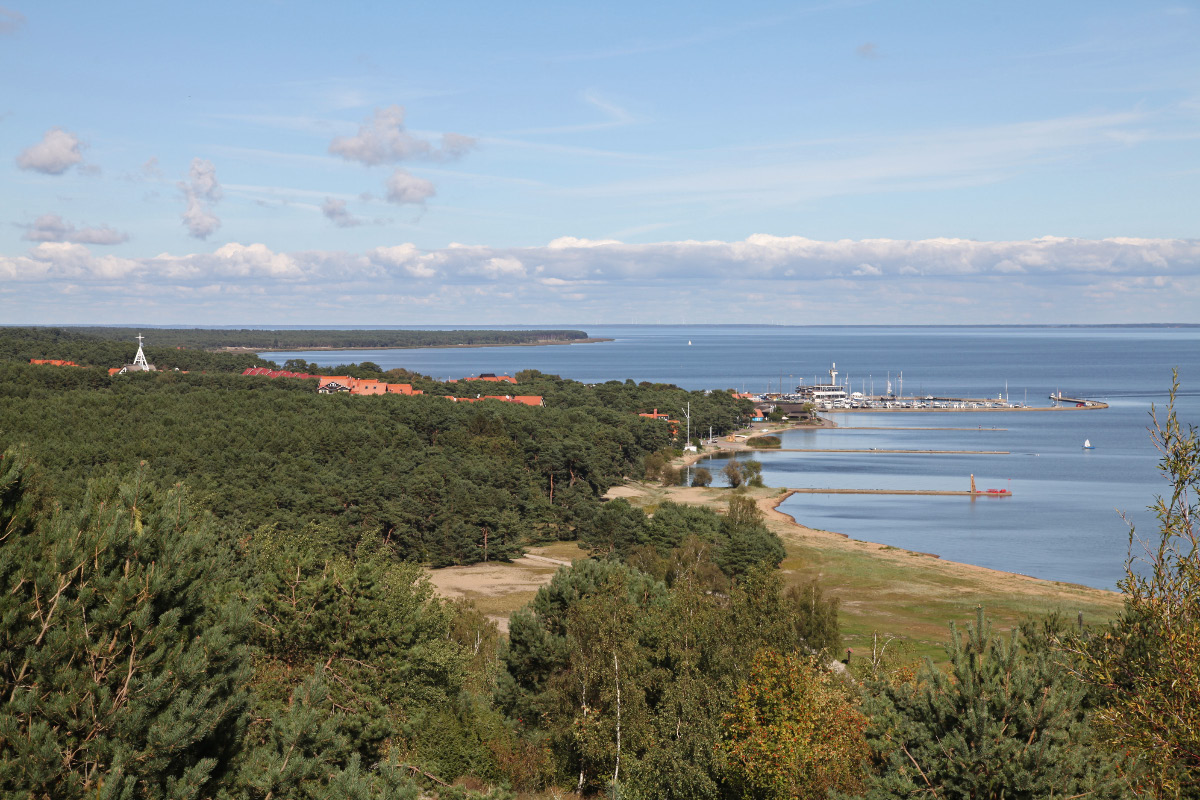 |
|
| |
Nida – Nidden on the Kuršių nerija – Curonian Spit – Kurische Nehrung |
|
| |
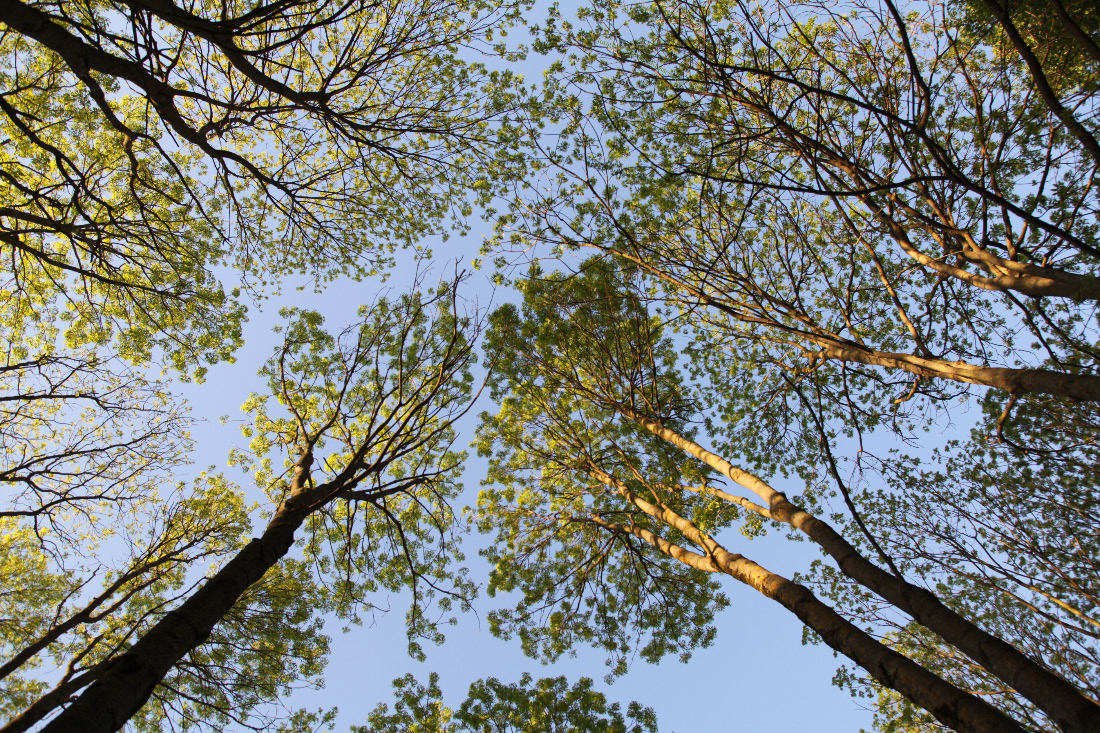 |
|
| |
Upward life in Kaunas on 19 May 2017 |
|
| |
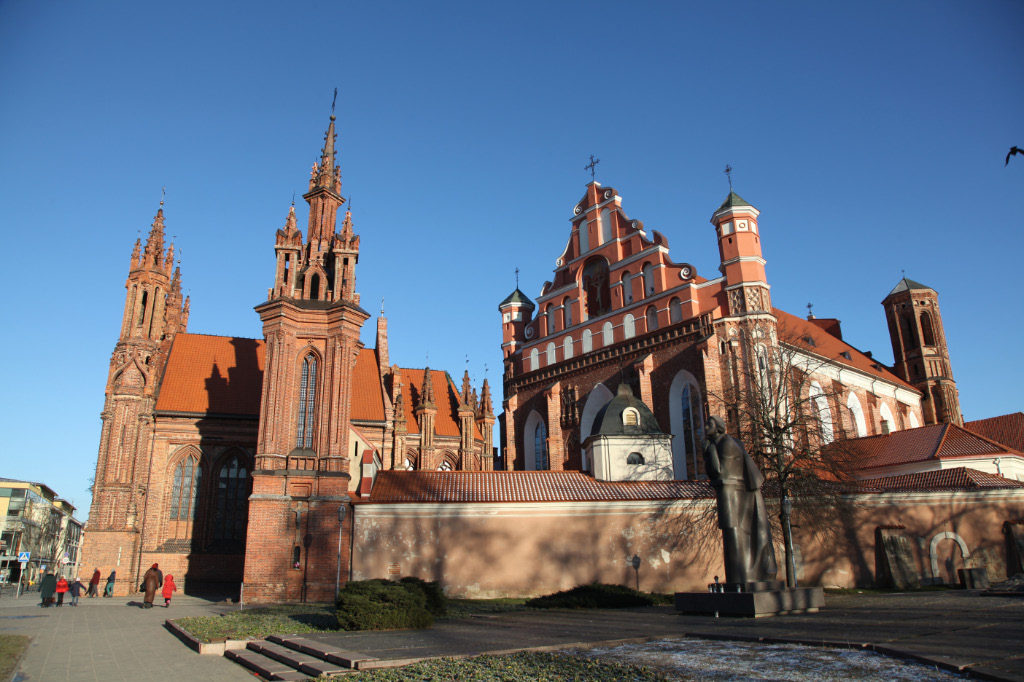 |
|
| |
Šv. Onos Bažnyčia – Saint Anne's Church in Vilnius, consecrated in 1500, and
Šv. Pranciškaus ir Šv. Bernardino Bažnyčia – Church of Saint Francis and Saint Bernard, consecrated in 1516 |
|
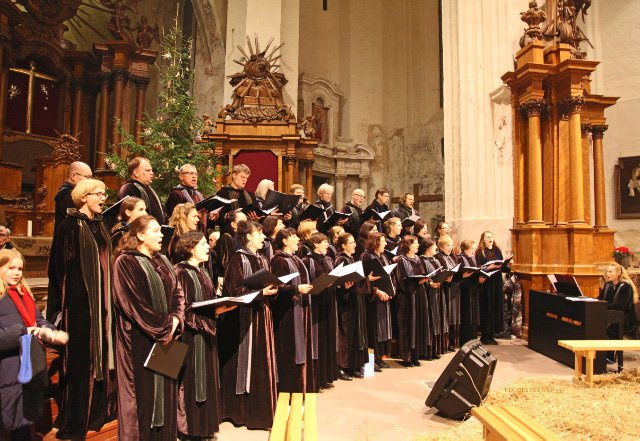 |
|
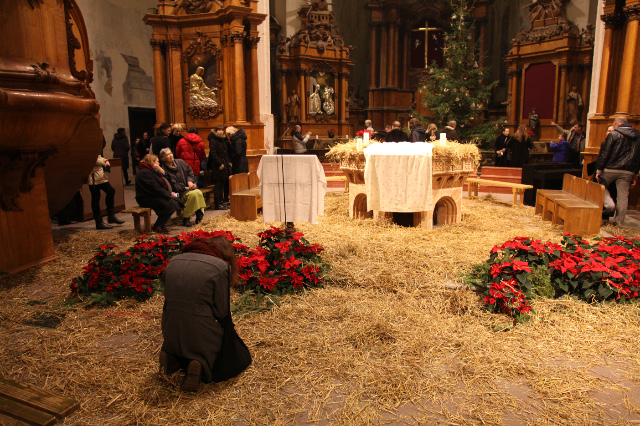 |
| |
|
Christmas 2014 |
| |
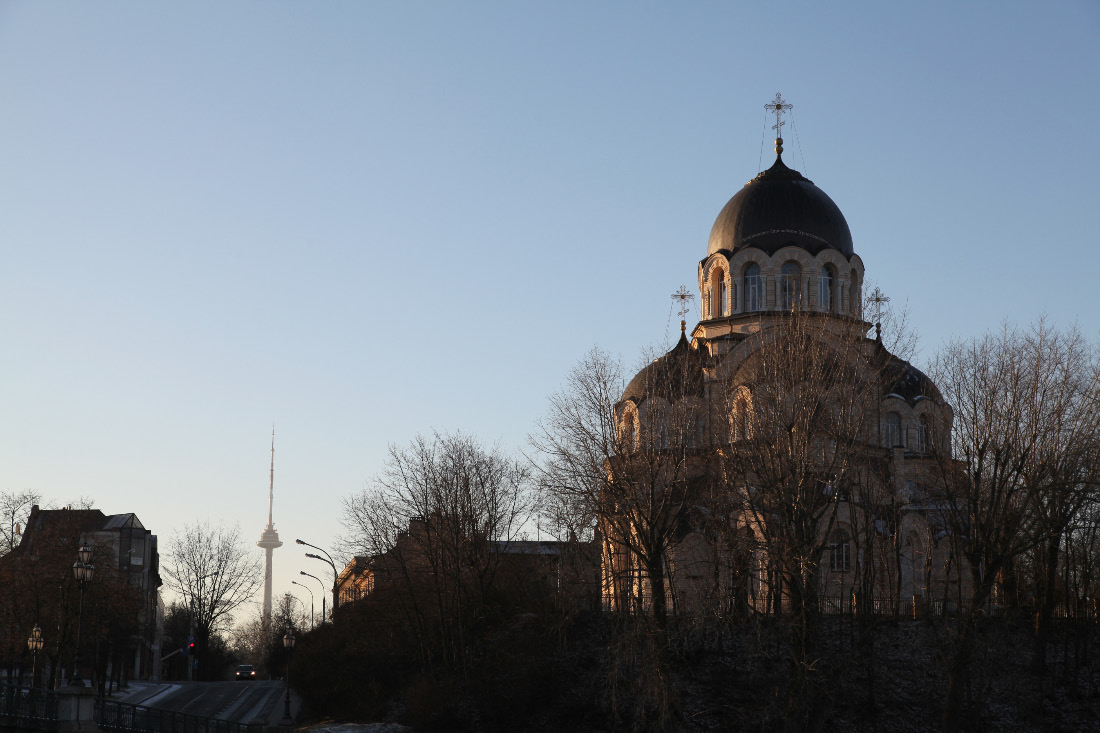 |
|
| |
Consecrated in 1903, Церковь Знамения Божией Матери – the Orthodox Church of Our Lady of the Sign – Dievo Motinos „Ženklas iš dangaus“ – in Catholic Lithuania, and to the viewer's right, about four kilometers distant is the famed, 326.5 meter-high, Vilniaus Televizijos Bokštas – Vilnius TV Tower, the site of the 11-13 January 1991 Events, and the murder by the KGB of 14 unarmed civilians, one of the landmark events in the dissolution of the Bolshevik Soviet Union. |
|
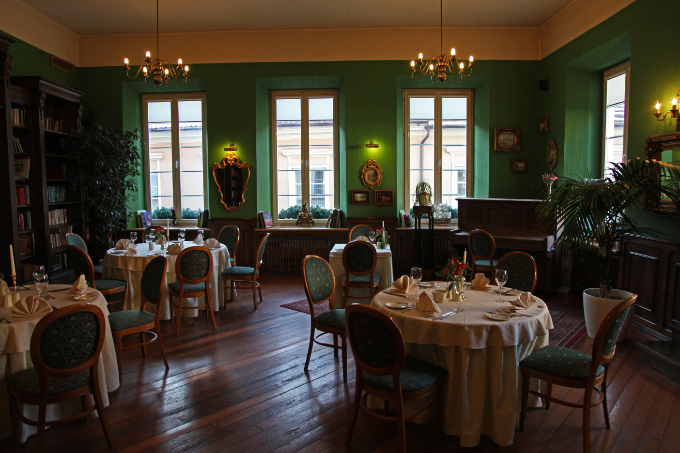 |
|
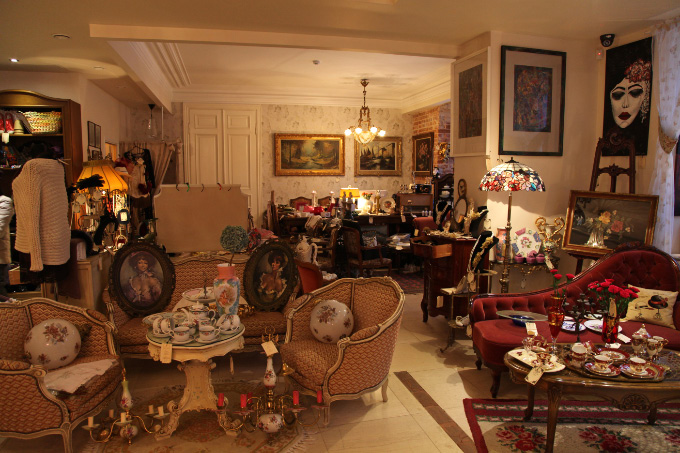 |
| Beauties and comforts of European Christendom, allowing us to contemplate, or forget, God, these in Vilnius ... |
|
... and these in Kaunas |
| |
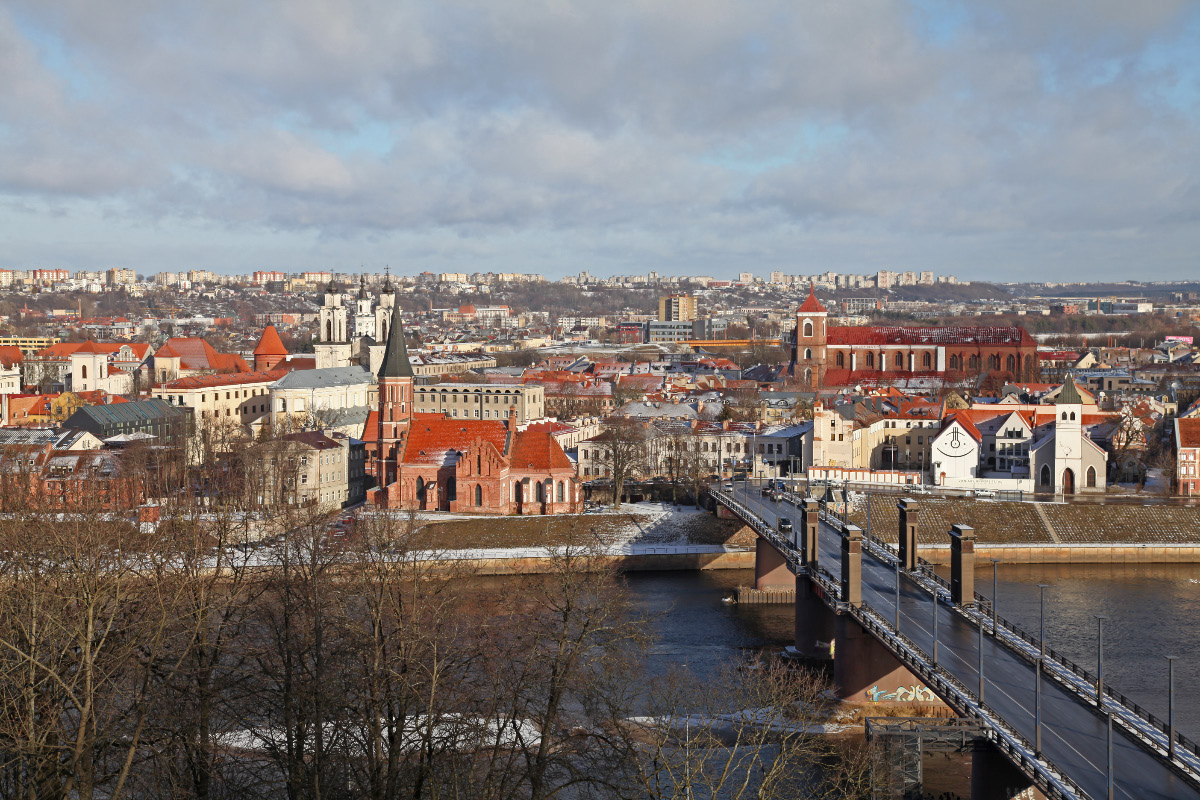 |
|
| |
Across the Vytautas' Bridge and the Nemunas River to the Old Town of Kaunas on 8 February 2015
|
|
| |
Do zobaczenia! – Kol mes vėl susitiksime! – Until we meet again! |
|
| |
|
|
|
|
| |
Takie były zabawy, spory w one lata
Śród cichéj wsi litewskiéj; kiedy reszta świata
We łzach i krwi tonęła, gdy ów mąż, bóg wojny
Otoczon chmurą pułków, tysiącem dział zbrojny,
Wprzągłszy w swój rydwan orły złote obok srebnych.
Od puszcz Libijskich latał do Alpów podniebnych,
Ciskając grom po gromie, w Piramidy, w Tabor,
W Marengo, w Ulm, w Austerlitz. Zwycięstwo i Zabor
Biegły przed nim i za nim. Sława czynów tylu,
Brzemienna imionami rycerzy, od Nilu
Szła hucząc ku północy, aż u Niemna brzegów
Odbiła się, jak od skał, od Moskwy szeregów,
Które broniły Litwę murami żelaza
Przed wieścią dla Rossyj straszną jak zaraza. |
|
Such were the amusements and disputes of those days in the quiet Lithuanian village, while the rest of the world was swimming in tears and blood, and while that man, the god of war, surrounded by a cloud of regiments, armed with a thousand cannon, harnessing to his chariot golden eagles beside those of silver, was flying from the deserts of Libya to the lofty Alps, casting thunderbolt on thunderbolt, at the Pyramids, at Tabor, Marengo, Ulm, and Austerlitz. Victory and Conquest ran before and after him. The glory of so many exploits, heavy with the names of heroes, went roaring from the Nile to the North, until at the shores of the Niemen it was beaten back as from crags by the Muscovite lines that defended Lithuania as with walls of iron against tidings terrible for Russia as the plague. |
|
| |
|
|
|
|
| |
Przecież nieraz nowina, niby kamień z nieba
Spadała w Litwę; nieraz dziad żebrzący chleba,
Bez ręki lub bez nogi, przyjąwszy jałmużnę,
Stanął i oczy w koło obracał ostróżne.
Gdy niewidział we dworze rossyjskich żołnierzy,
Ani jarmułek, ani czerwonych kołnierzy,
Wtenczas kim był, wyznawał; był legionistą,
Przynosił kości stare na ziemię, ojczystą,
Któréj już bronie niemógł — jak go wtenczas cała
Rodzina pańska, jak go czeladka ściskała
Zanosząc się od płaczu! on za stołem siadał,
I dziwniejsze od baśni historye gadał.
On opowiadał jako Jenerał Dąbrowski
Z ziemi Włoskiéj stara się przyciągnąć do Polski,
Jak on rodaków zbiera na Lombardskiém polu;
Jak Kniaziewiez roskazy daje s Kapitolu,
I zwycięsca, wydartych potomkom Cezarów
Rzucił w oczy Francuzów sto krwawych sztandarów;
Jak Jabłonowski zabiegł aż kędy pieprz rośnie,
Gdzie się cukier wytapia, i gdzie w wiecznéj wiośnie
Pachnące kwitną lasy; z legią Dunaju
Tam wódz murzyny gromi, a wzdycha do kraju. |
|
And yet now and then, like a stone from the sky, news came even to Lithuania; now and then an old man, lacking a hand or a foot, who was begging his bread, would stand and cast cautious eyes around, when he had received alms. If he saw no Russian soldiers in the yard, or Jewish caps, or red collars, then he would confess who he was: he was a member of the Polish legions, and was bringing back his old bones to that fatherland which he could no longer defend. Then how all the family—how even the servants embraced him, choking with tears! He would seat himself at the board and tell of history more strange than fable; he would relate how General Dombrowski was making efforts to penetrate from the Italian land into Poland, how he was gathering his countrymen on the plains of Lombardy; how Kniaziewicz was issuing commands from the Roman Capitol, and how, as a victor, he had cast in the eyes of the French an hundred bloody standards torn from the descendants of the Cæsars; how Jablonowski had reached the land where the pepper grows and where sugar is produced, and where in eternal spring bloom fragrant woods: with the legion of the Danube there the Polish general smites the negroes, but sighs for his native soil. |
|
| |
|
|
|
|
| |
Mowy starca krążyły we wsi pokryjomu;
Chłopiec co je posłyszał, znikał nagle z domu,
Lasami i bagnami skradał się tajemnie,
Ścigany od Moskali, skakał kryć się w Niemnie
I nurkiem płynął na brzeg księstwa Warszawskiego,
Gdzie usłyszał głos miły «Witaj nam kollego!»
Lecz nim odszedł, wyskoczył na wzgórek s kamienia
I Moskalom przez Niemen rzekł: «do zobaczenia».
Tak przekradł się Górecki, Pac i Obuchowicz,
Piotrowski, Obolewski, Rożycki, Janowicz,
Mirzejewscy, Brochocki i Bernatowicze,
Kupść, Gedymin i inni których nie policzę;
Opuszczali rodziców i ziemię kochaną,
I dobra, które na skarb Carski zabierano. |
|
The words of the old man would spread secretly through the village; the lad who heard them would vanish suddenly from home, would steal mysteriously through the forests and swamps, pursued by the Muscovites, would leap to hiding in the Niemen, and beneath its flood swim to the shore of the Grand Duchy of Warsaw, where he would hear sweet words of greeting, “Welcome, comrade!” But before he departed, he would climb a stony hill and call to the Muscovites across the Niemen: “Until we meet again!” Thus there had stolen away Gorecki, Pac, and Obuchowicz; Piotrowski, Obolewski, Rozycki, Janowicz, the Mirzejewskis, Brochocki and the brothers Bernatowicz, Kupsc, Gedymin, and others whom I will not enumerate; they had abandoned their kinsmen and their beloved land, and their estates, which were seized for the Tsar's treasury. |
|
| |
|
|
|
|
| |
Pan Tadeusz czyli Ostatni Zajazd na Litwie
Historia szlachecka z roku 1811 i 1812 we dwunastu księgach wierszem.
Opublikowano w 1834 roku w Paryżu,
przez Adama Mickiewicza (24 grudnia 1798 r. - 26 listopada 1855 r.) |
|
Pan Tadeusz or The Last Foray in Lithuania
A Story of life among Polish Gentlefolk in the years 1811 and 1812 in Twelve Books.
Published in 1834 in Paris,
by Adam Mickiewicz (24 December 1798 – 26 November 1855) |
|
| |
|
|
|
|
| |
Ponas Tadas, arba Paskutinis antpuolis Lietuvoje:
Bajorų nuotykiai iš 1811 ir 1812 metų dvylikoje eiliuotųknygų.
Paskelbta 1834 m. Paryžiuje
Adomo Mickevičiaus (1798 m. gruodžio 24 d. - 1855 m. lapkričio 26 d.) |
|
|
|
|
| |
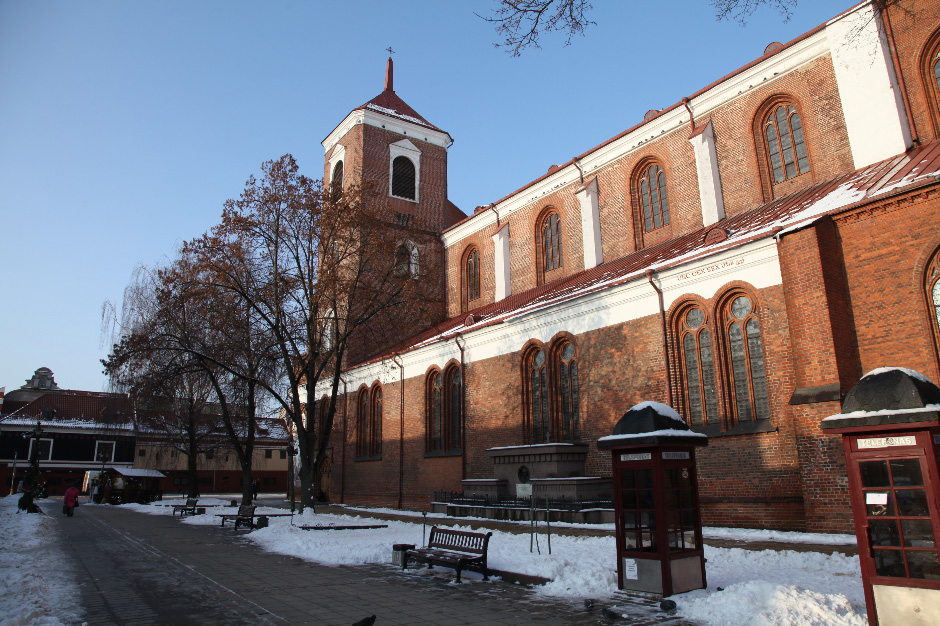 |
| |
|
Kauno Šv. apaštalų Petro ir Povilo arkikatedra bazilika – Kaunas Cathedral Basilica of apostles Saint Peter and Saint Paul
First mentioned in written sources in 1413, and the oldest Gothic Church in Lithuania, but also with later Renaissance and Baroque elements. |
| |
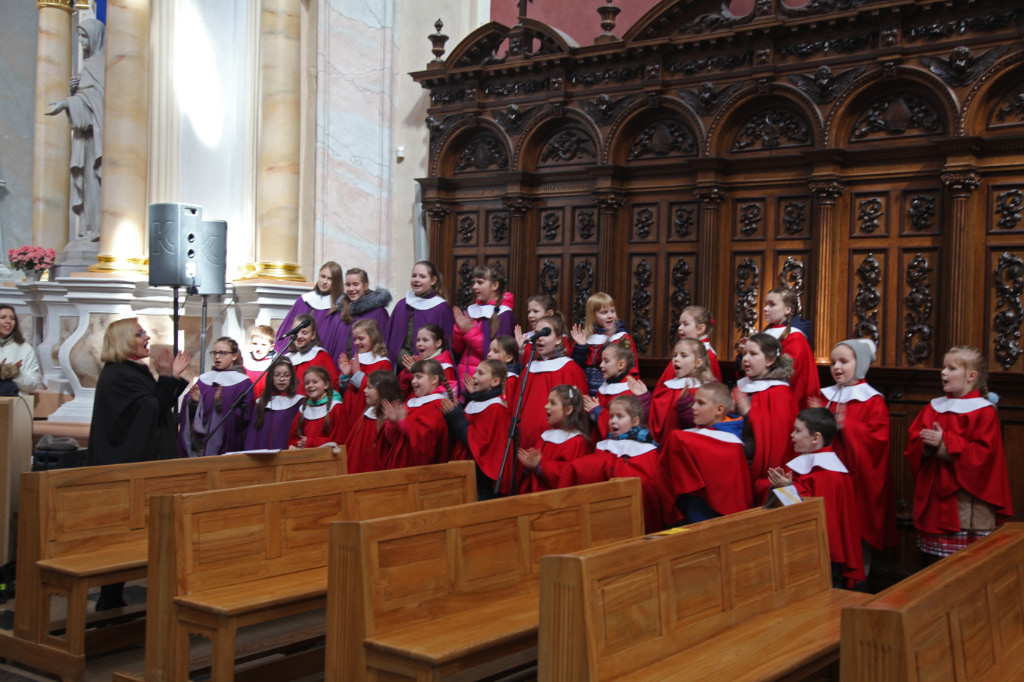 |
|
| |
The children's choir at High Mass on Easter Sunday on the 16th of April of 2017. |
|
| |
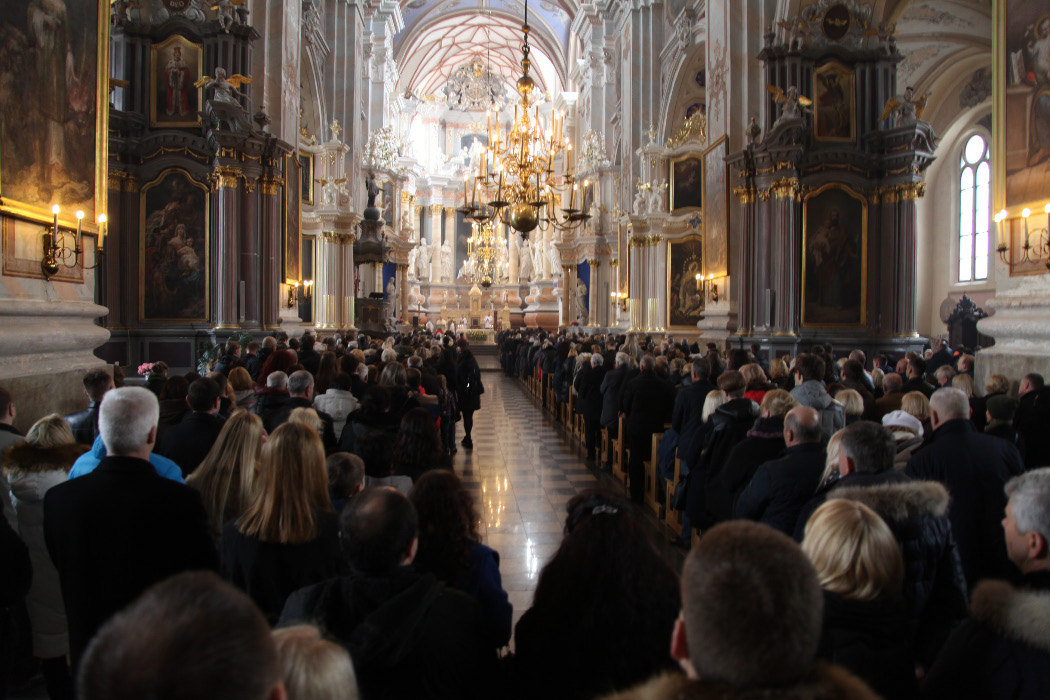 |
|
| |
High Mass on Easter Sunday of 2017 |
|
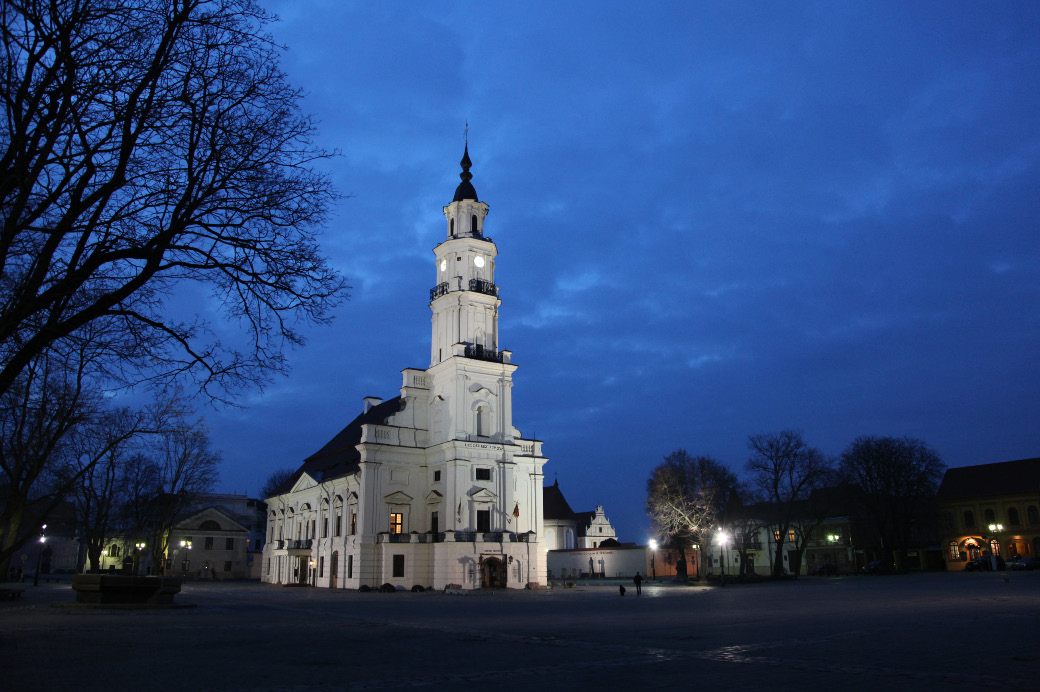 |
|
|
| Kauno rotušė – Town Hall of Kaunas, begun in 1542 |
|
|
| |
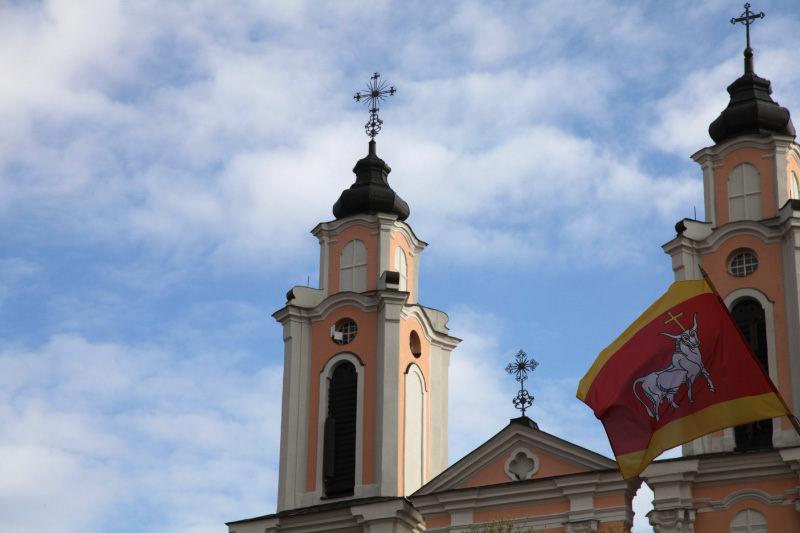 |
|
| |
Towers of the Šv. Pranciškaus Ksavero bažnyčia – Church of Saint Francis Xavier, consecrated in 1722 with the Flag of Kaunas in the foreground posted on the Town Hall |
|
|
|
|
| |
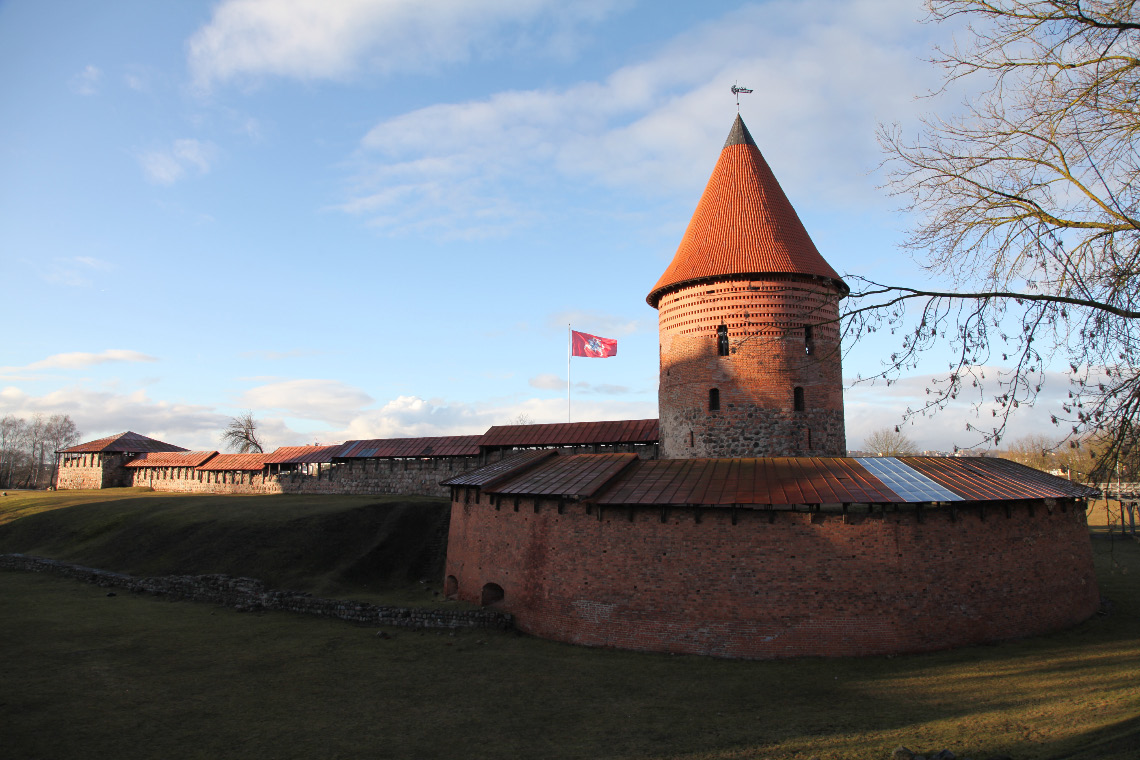 |
|
| |
Perhaps replacing a still earlier, XII century, structure, as indeed IV to V century wooden defensive structures, the Kauno pilis – Kaunas Castle as pictured here on 23 II 2016, was first mentioned in written sources in 1361. It is the oldest extant stone and brick castle in Lithuania. The remaining structure is believed to resemble the castle as rebuilt in 1376. In a sense it stands as an unfortunate memorial to Christian dis-unity. Grand Duke of Lithuania Gediminas (c.1275, r. 1316 – December 1341) was (? forced to ?) play games ... or engage in diplomatic maneuvers ... with the Holy See and papal legates in the 1320s over the question of his and his realm's baptism and conversion to Christianity, that is, acceptance of Christ. It has been forcefully argued, that such were a statesmanlike way of dealing with a three-way conflict between his Catholic, Orthodox and pagan subjects, together with constant external threat of invasion by the the Teutonic Knights and the Livonian Order, as part of the ill-conceived and executed Northern Crusades. The Grand Duke died an un-baptized pagan. One of Gediminas' sons and successors, Kęstutis (r. 1342-1382, variously with his brother Algirdas and his nephew Jogaila–Władysław II Jagiełło) was Grand Duke when the Teutonic Knights in fact invaded Lithuania and engaged in a three-week seige of Kaunas Castle in April of 1362. Kaunas Castle was defended by 400 Lithuanians under the command of Kęstutis' son, Vaidotas. Only 36 survived, including Vaidotas. The Teutonic Knights celebrated Mass on in Kaunas Castle on Easter of 1362. Vaidotas went on to live until at least 1401. He was a brother of Grand Duke and King Vytautas the Great (* c. 1350 to 27 June 1430 †). |
|
| |
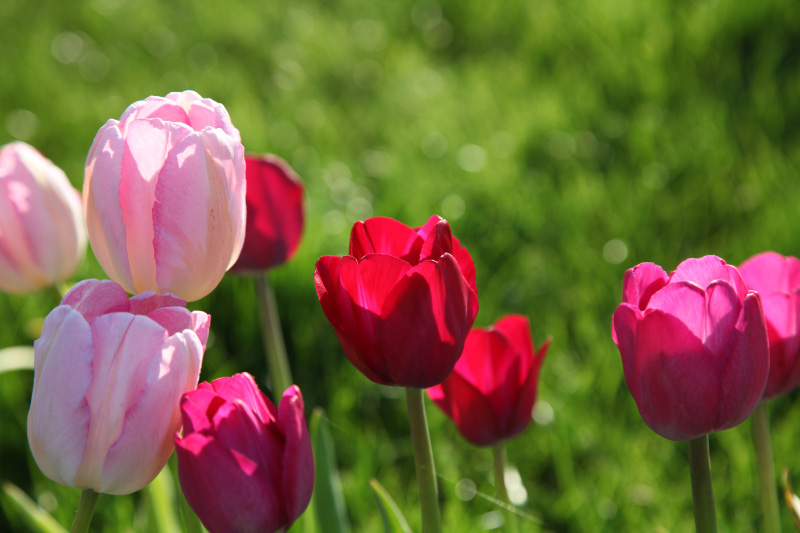 |
|
| |
|
|
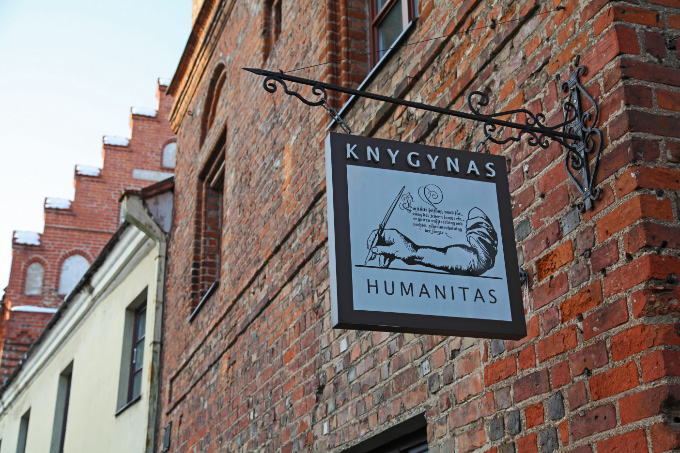 |
|
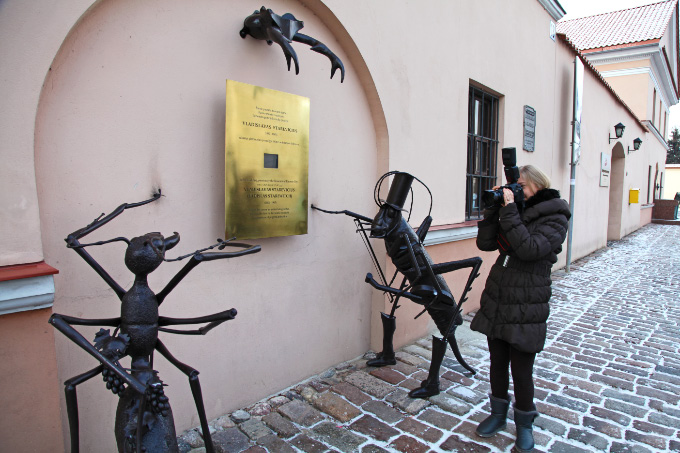 |
| |
|
Everybody seems so interested in this house
|
| |
|
|
| |
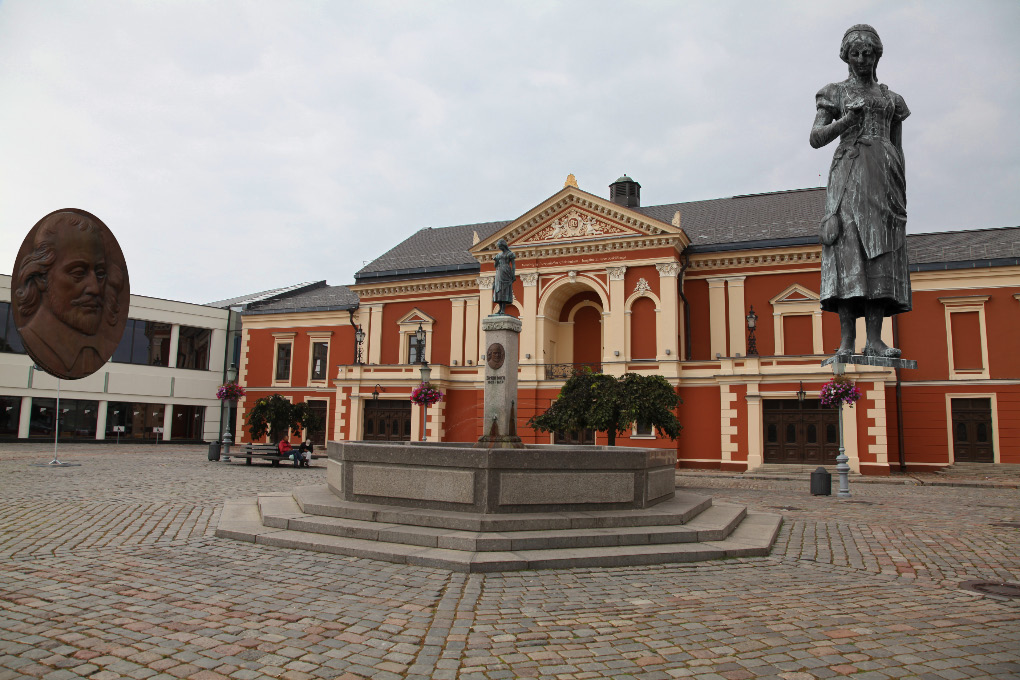 |
|
| |
Simono Dacho paminklas–fontanas – Simon Dach Denkmal-Brunnen
Klaipėdos dramos teatras – Klaipeda Drama Theater
Teatro aikštę – Theaterplatz |
|
| |
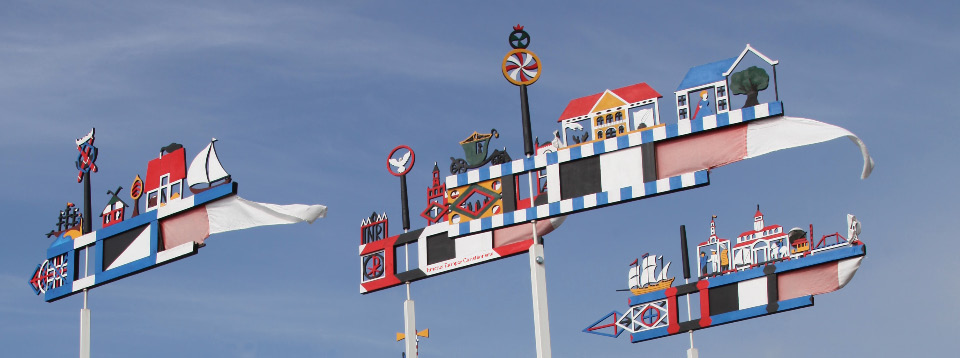 |
|
| |
Curonian pennants in Klaipėda |
|
| |
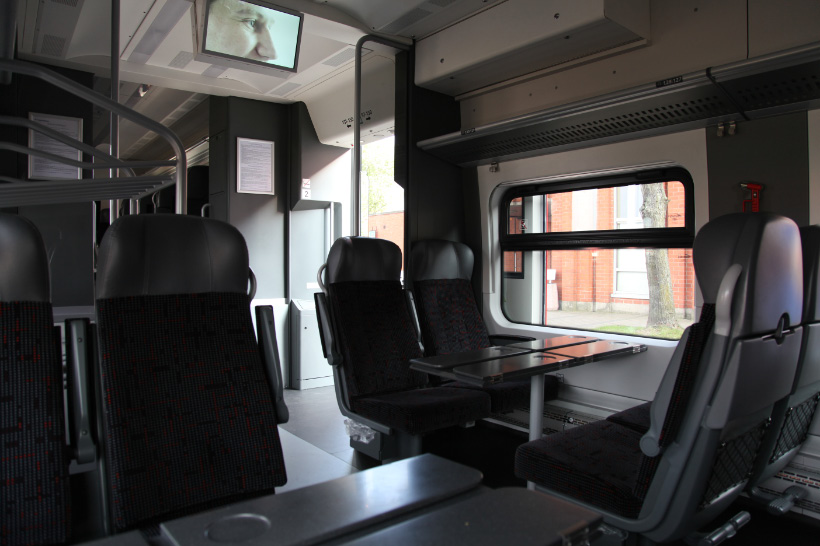 |
|
| |
Train on line from Klaipėda to Vilnius, 7 September 2016, showing us all the hardships of travel within European Christendom in the XXI century. Your humble narrator loves trains, but a train this beautiful and efficient and high quality is one more reminder of our condition. Christendom was built and defended and then built some more by men ready to die for the faith. In our times, how many of us would volunteer to part with five percent of our comforts for the defense of Church or Christendom? |
|
| |
|
|
|
Lietuva - Jungtinė Europos Krikščionija (Jungtinis Europos Krikščionijos; Jungtinė Europos Krikščionijos) |
| |
|
|
|
Lithuania - United European Christendom |
|